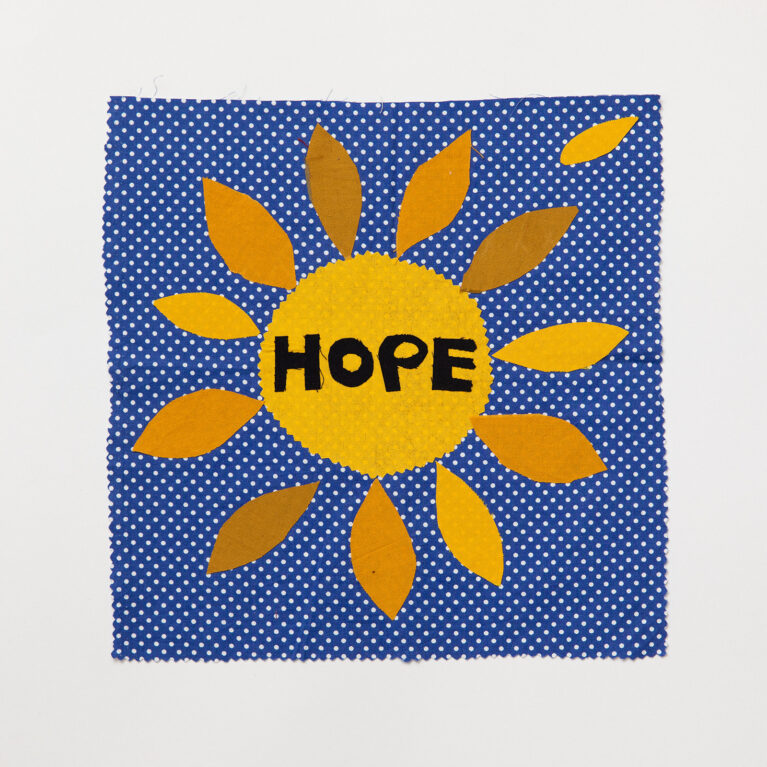Squares for The Climate Quilt
The Climate Quilt
Initiated by the late Mary Good, driven by Carol Ride from Psychology for a Safe Climate, and brought together by Jo Lane, The Climate Quilt is comprised of sewn squares of concern for our climate, our environment, and our future.
Created by people of all ages and sewing experience, the squares give agency to directly personal and worldwide distress and grief for the dire situation we find ourselves in.
This beautiful, sad, wild, colourful quilt—made entirely by hand, using repurposed materials and thread—is a work encompassing human love and care, scientific facts and predictions as well as abstract expressions of climate despair, rage and dread.
Made in homes long before machines were invented, quilts have long been a quiet, female collective labour of love throughout centuries. The Climate Quilt embraces this tradition and speaks to us about our future.
Our heartfelt thanks to contributors Sally Arnold, Maggie Cowling, Rosalie Day, Taryn D’Costa, Olga Dziemidowicz, Louise Einfeld, Esther Ellwood, Marg Ferris, Joan Flemming, Sue Formby, Susy Fraser, Mary Good, Deborah Hart, Liz Hetzel, Myra Holmes, Katri Holopainen, Jess Hutchison, Pru Jolley, Nancy Lang, Jo Lane, Stephen Palmer, Lalli Parkin, Elizabeth Pilven, Ros Powrie, Ros Prato, Carol Ride, Louise Rippert, Monique Silk, Hanna Tai, Nerida Thompson, Chloe Watfern and Kati Watson.
A CLIMARTE and Psychology for a Safe Climate collaboration, we thank Tal Fitzpatrick for her encouragement of this project and the Spanish publishing house Edelvives for reproducing some images from The Climate Quilt in its Year 11 Arts & Crafts school book.
Our special offering at this contemplative time, The Climate Quilt was on show in the front room of 120 Bridge Road, Richmond from 20 December 2023 until early February 2024.
The Climate Quilt. Photographed by Julian Meehan

Making 'The Climate Quilt'
To begin, people selected an image which illustrated the seriousness of the plight of our life on planet earth. Using lightweight fabric, cotton or linen (natural, second hand fabrics), the finished visible size of the squares is approximately 28cm x 28cm. The extra size allowed us to sew them all together to create the quilt coverlet.
The next step was to embroider or stitch the image. Running stitch is the basis of all embroidery and you can make lovely pictures or text just using running stitch. Any embroidery cotton was used and shared around.
No hoop was needed, just the square of fabric. There was no limit to the creativity that each person used…appliqué, needlepoint … the sky was the limit.
The sessions hosted at the CLIMARTE Gallery were guided by experts, with some materials provided.
